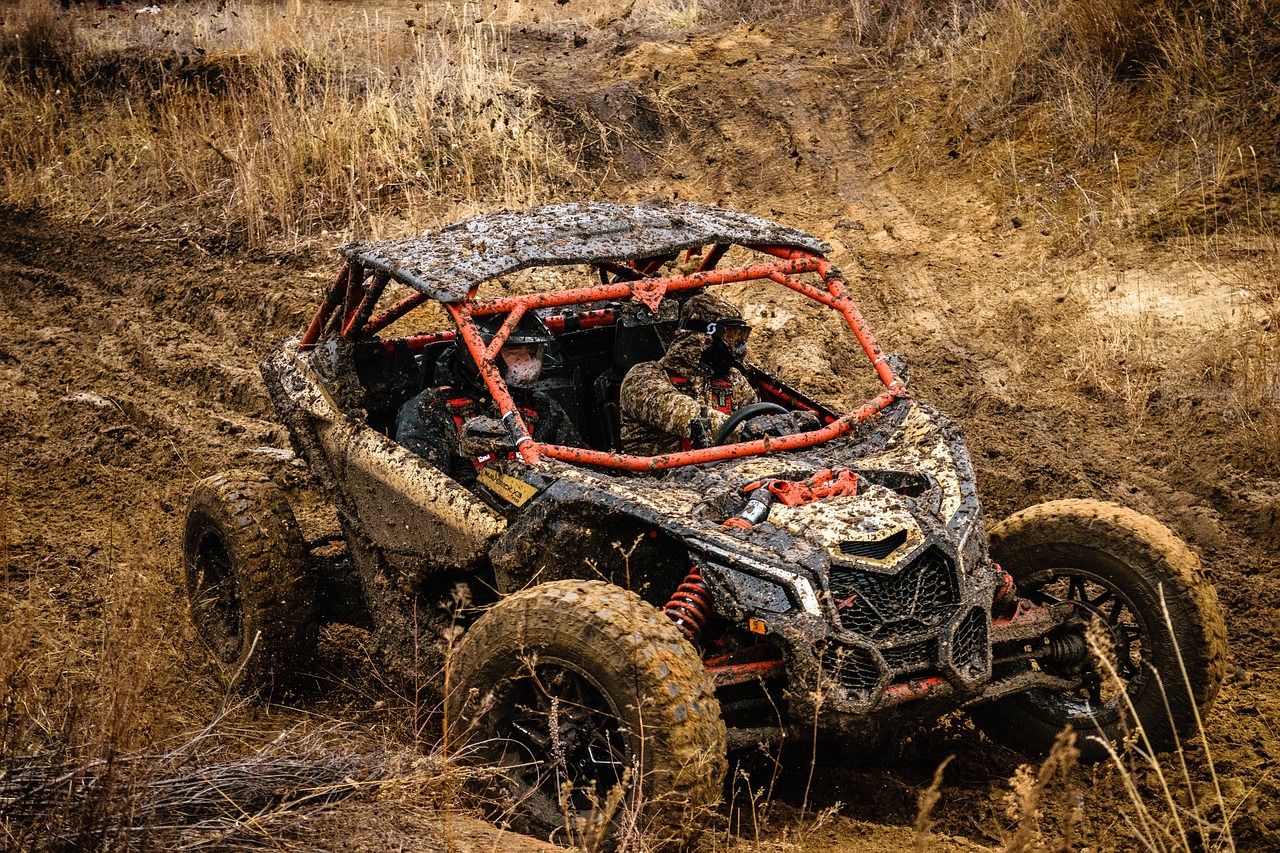In the world of off-roading, few experiences match the thrill of navigating through muddy trails on a UTV. Mud riding is not only a favorite pastime for many enthusiasts but also a challenging test of skill and preparedness. By understanding how to maintain traction and quickly recover when stuck, UTV owners can elevate both their safety and enjoyment, ensuring every off-road adventure remains a memorable one.

Understanding UTV Mud Riding: What You Need to Know
Before hitting the trail, it’s important to grasp the fundamentals that make UTV mud riding unique. Mud changes the dynamic of your vehicle’s traction and handling, requiring specialized driving techniques to maintain control. Below are some key aspects to keep in mind:
- Mud Depth and Terrain Variations: Not all mud is created equal. Shallow, sticky clay can rob your tires of grip, while deep, watery mud can swallow your wheels if you’re not careful. Understanding how different terrains affect traction is essential for safe mud riding.
- Slipping and Spinning Wheels: As soon as mud coats your tires, traction decreases dramatically. Spinning wheels are a primary warning sign that you’re about to lose momentum. Recognizing early slip can help you adjust throttle control or steering angles to maintain forward progress.
- Vehicle Weight and Distribution: UTVs are designed for off-road performance, but factors like accessories, cargo, and passenger weight can change how the vehicle handles in mud. Keep an eye on weight distribution and tire pressure to optimize grip.
Check out this detailed guide on UTV Mud Riding techniques to learn more about how terrain and vehicle setup intersect with driver skill.
Key Techniques for UTV Mud Riding
Having the right strategy can mean the difference between cruising through muck or getting stranded. Below are essential techniques to ensure your UTV stays in motion:
- Proper Tire Selection – Tires with an aggressive tread pattern specifically designed for mud can dramatically improve traction. Lug depth, self-cleaning treads, and sidewall strength are important considerations.
- Smart Throttle Control – Overly aggressive acceleration often leads to wheel spin and deeper ruts. Instead, apply steady, controlled throttle to maintain forward momentum and prevent burying your tires.
- Maintaining Momentum – In many muddy situations, momentum is your best friend. Slowing down too much or stopping completely can cause your tires to sink, making it more difficult to escape.
- Using Winches and Recovery Gear – Every mud-ready UTV should be equipped with a reliable winch, tow straps, and other recovery tools. When you do get stuck, these items can save time—and your vehicle’s drivetrain.
For gear, parts, and add-ons that reinforce your mud-riding experience, check out our comprehensive selection of UTV Mud Riding safety equipment.
Putting it into Practice: Steps for UTV Mud Riding
Enhancing your mud riding skills takes both knowledge and hands-on experience. Follow these steps to boost your confidence on the trail:
- Scout the Trail – Whenever possible, step out and inspect muddy sections before driving through them. Look for hidden ruts, rocks, or sudden drops that could halt your progress or damage your vehicle.
- Engage 4WD and Low GearActivate four-wheel drive early, and use low gear to amplify torque. This setup helps you maintain traction and avoid high-speed wheel spin.
- Keep a Steady SpeedOnce you commit to a muddy stretch, maintain a consistent speed. Sudden stops or big throttle changes can cause deep sinkage, making recovery difficult.
For additional advice, tips, and inspiration, visit our UTV Mud Riding blog articles to delve deeper into advanced techniques and success stories from fellow enthusiasts.
Best Practices for UTV Mud Riding
Preventive measures and smart preparation can save you from costly repairs or stressful scenarios:
- Regular Maintenance: Mud can find its way into every nook and cranny of your UTV, potentially causing corrosion or mechanical wear. Clean and inspect your vehicle thoroughly after each ride.
- Invest in Quality Gear: Proper tires, recovery gear, and protective accessories (like skid plates and fender extensions) can prevent damage and reduce downtime.
- Practice in Controlled Environments: If you’re new to mud riding, start in areas with shallow mud and a safe exit strategy. Build your skills gradually before tackling more challenging terrain.
- Ride with Friends: Having a fellow off-roader nearby ensures help is on hand if you get stuck or face mechanical issues.
Seeking Further Improvement and Expert Guidance
Even the most seasoned riders can benefit from professional insights. Whether you’re looking to refine your technique or upgrade your UTV for serious mud riding, consider UTV Mud Riding professional guidance. Their expertise in repairs, maintenance, and custom builds can help you tackle any off-road challenge.
Remember, mastery comes with consistent practice. Keep testing your skills, document your progress, and stay open to learning from every muddy adventure.
Main Points to Remember
- Preparation is Crucial: Proper gear, vehicle checks, and tire selection help you tackle mud safely.
- Maintain Control: Steady throttle application and momentum are key to avoiding deep sinkholes.
- Use the Right Recovery Tools: A well-equipped UTV can save you major headaches when conditions get sticky.
- Practice and Seek Expertise: Gradual skill-building and occasional professional input ensure you evolve as a confident, capable mud rider.
By following these strategies and regularly honing your mud riding techniques, you’ll gain the skills and confidence needed to turn any off-road excursion into a thrilling adventure. Here’s to getting out there, getting a little dirty, and conquering every trail with your UTV!
